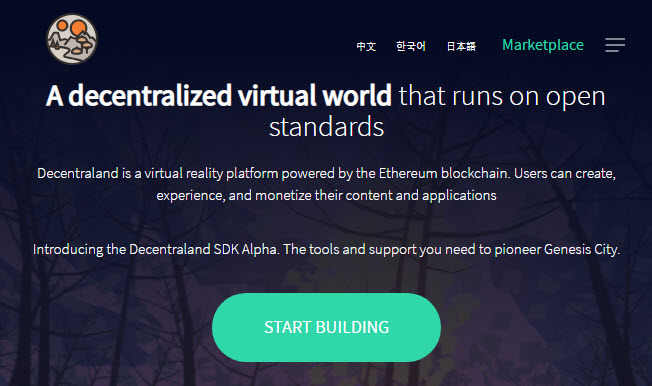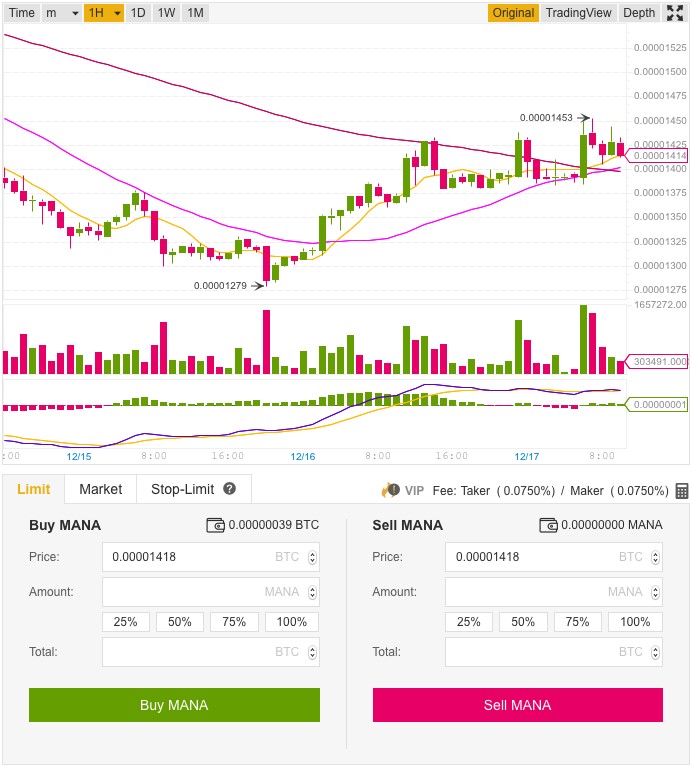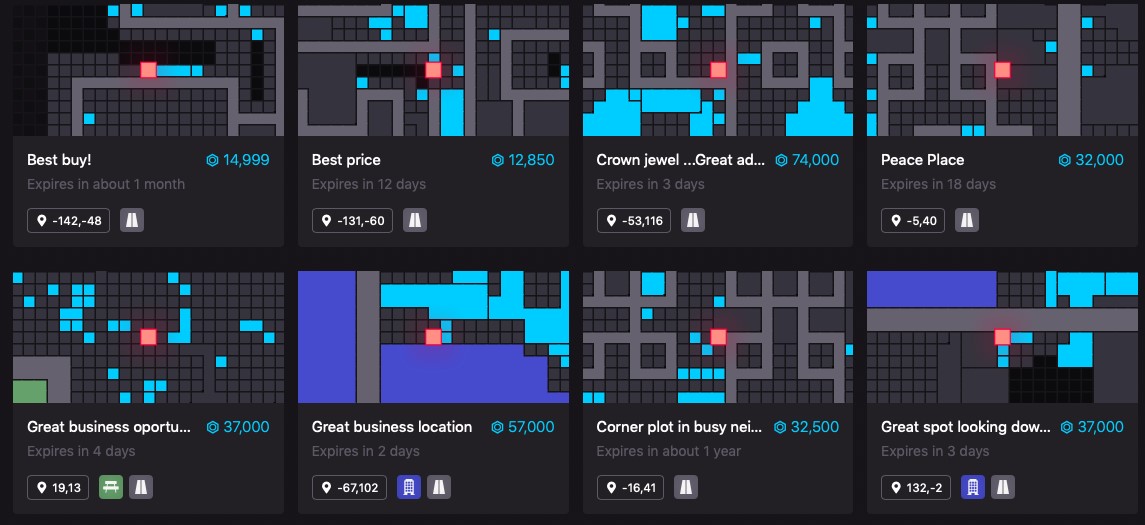Decentraland (MANA) Review: Play on the Virtual Blockchain
| Decentraland Key Information | |
| Name | Decentraland |
| Ticker | MANA |
| Total Supply | 2.6 billion |
| Initial Price | $0.024 |
| Category | Virtual Reality, Gaming |
| Website URL | Go to Decentraland.org |
| Resources | Read Decentraland WhitePaper |
Decentraland is a virtual reality world built on and powered by the Ethereum blockchain. The ecosystem supports the development and hosting of virtual reality assets inside the platform, and users who have purchased space can cite the ledger to prove ownership over their virtual property. Moreover, they can build monetized attractions on their personal “land” and earn cryptocurrency from other users who come to have fun.
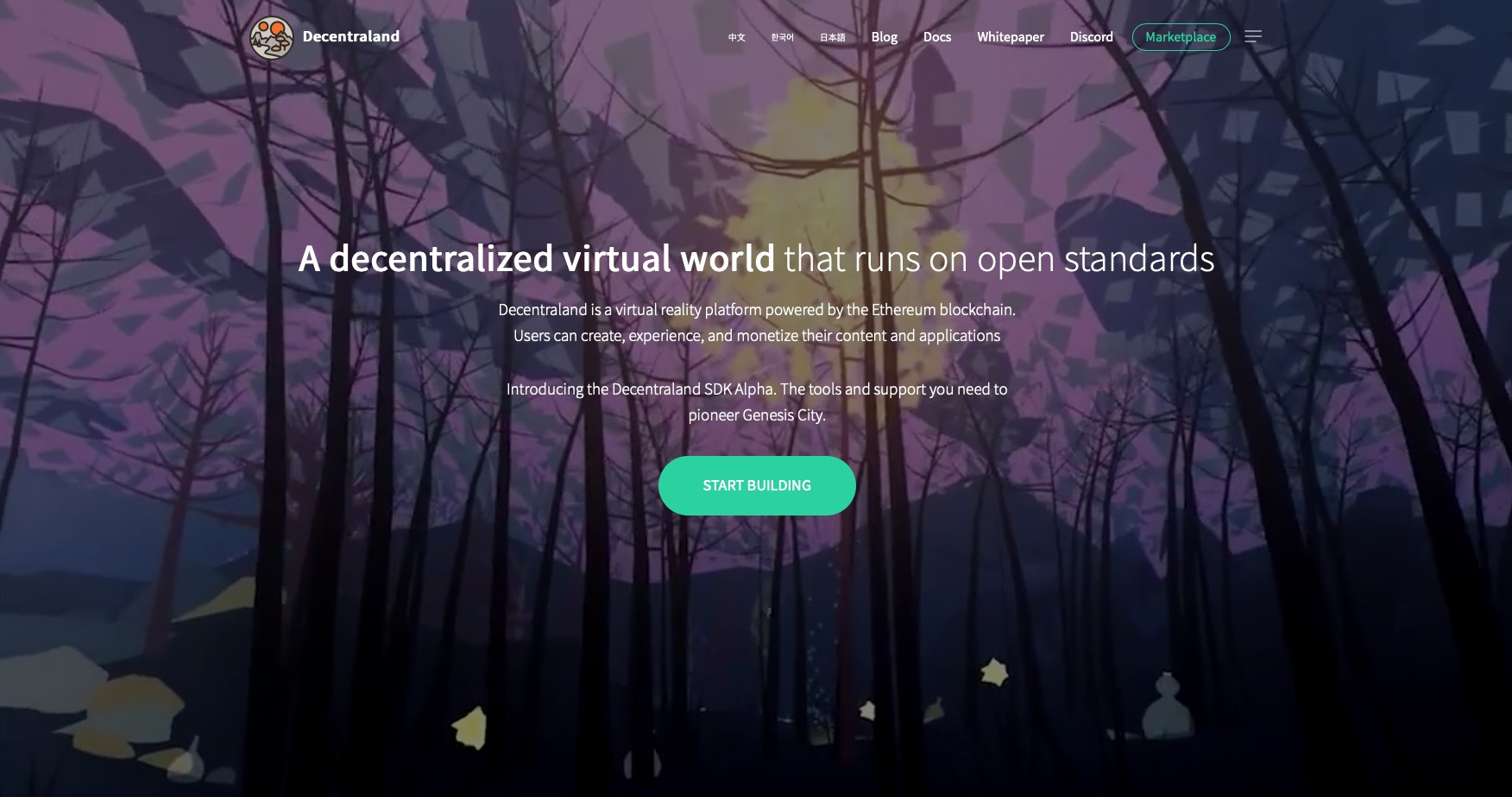
The Idea Behind Decentraland
The minds behind Decentraland are founders Ari Meilich and Esteban Ordano, who have extensive experience in the blockchain industry. After successfully launching a blockchain video streaming platform called Streamium, the two began working on a way to assign ownership of visible, digital space. This was Decentraland’s “Stone Age”, which demonstrated that blockchain metadata could be used to prove ownership over pixels on a 2D plane.
Decentraland evolved with the finalization of “Bronze Age”—a similar concept but with 3D space divided into individual plots of land. These plots could be referenced using hash numbers on the blockchain, and from there, the MANA token was released to enable transactions between owners of land (LAND). Landowners can use MANA to interact with other users and the experiences they’ve built in Decentraland, to purchase more LAND, and to organize into neighborhoods or cities with certain themes.
The launch of Genesis City was a capstone for the project during an event called the “terraforming”, which saw the land in the world’s “capitol” auctioned off parcel by parcel. Today, MANA is listed on several exchanges and the virtual world is slowly maturing into the idea envisioned by its founders.
MANA Price History
MANA is the base cryptocurrency denominating purchases of LAND and services in the Decentraland world. It maintains its price via an economic model that “burns” MANA as it is used to purchase LAND, thus keeping upward pressure on the tokens’ relative fiat price. LAND itself is very limited as the world itself is finite and has edges like most sandbox-style video games. Additionally, individuals cannot own more than 33×33 feet of virtual space at any given time.
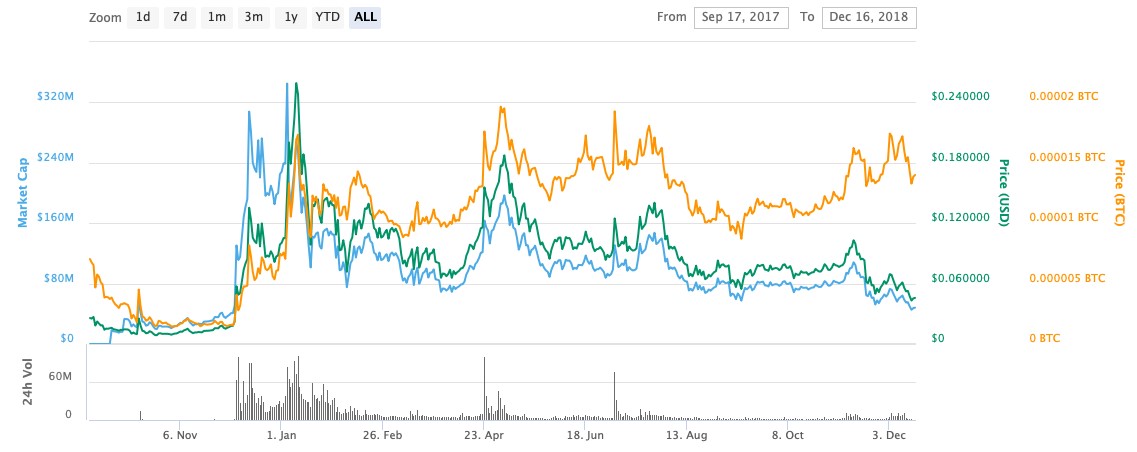
Despite the tangible, fundamental value of MANA for its nearly limitless potential, its price has largely tracked the market at large. After the launch of the Decentraland ICO in August 2017, which ended in just one day, the price of MANA moved from the initial $0.024 to a low of $0.01 before bouncing up to its all-time high of $0.25 on January 9, 2018 with the rest of the market. It managed to get as high as $0.18 and has since been on a downward trajectory. The current price of MANA is $0.045.
Decentraland Technology
Like many blockchain projects, Decentraland’s software stack is three layers tall, and is composed of the bottommost Consensus Layer, followed by the Land Content and Real-Time Layers on top. These three layers work together to create the virtual, experiential world and to support proof of ownership and transactions in the world itself.
Consensus Layer: This module uses Ethereum smart contracts to track and govern proof of land ownership. This is how users can reference the contents of their land and represent their property title to others. It’s also possible to use the smart contract to look up who is in possession of other LAND parcels and what type of content resides there.
Land Content Layer: This layer is essentially storage for all virtual assets hosted by the Decentraland blockchain, which also appear in the world itself. Scripts, textures, 3D models and other files used to build content in the world are here in their programmatic form.
Real-Time Layer: The real-time layer enables users inside Decentraland to connect and transact with one another using the platform’s peer-to-peer model.
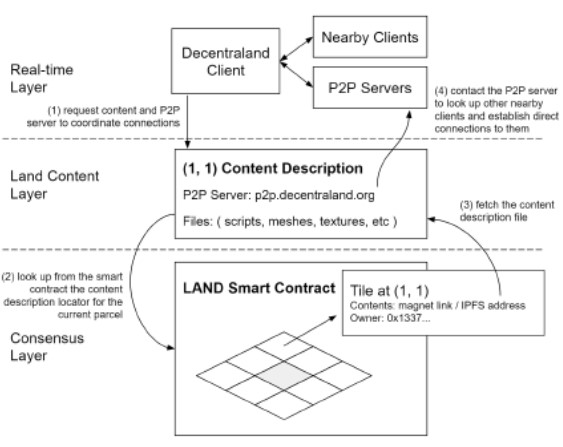
How to Purchase MANA
It’s getting easier and easier to purchase MANA. As its virtual world evolves, MANA is being introduced to exchanges at a faster rate, because many people realize just how finite the supply of LAND is. For example, MANA was recently listed on Coinbase against the USDC stable coin and will be listed against fiat currencies as well. MANA is also easily purchased from crypto-to-crypto exchanges such as Binance, Bittrex, and over 30 others. It’s even listed on the LAToken platform—an exchange for security tokens that denominate equity in real estate—because virtual real estate is a similar concept.
To buy MANA, simply create an account and transfer your cryptocurrency to an exchange wallet that also has MANA. After converting it to a common counter-currency such as BTC or ETH (if necessary) you’ll then find the relevant trading pair such as MANA/BTC and then hit Buy. This applies to nearly every exchange that MANA is listed on.
- Binance (Trade MANA with BTC on Binance)
- DragonEX (Trade MANA with USDT on DragonEX)
- TOPBTC (Trade MANA with BTC on TOPBTC)
- UEX (Trade MANA with ETH on UEX)
- Coineal (Trade MANA with ETH on Coineal)
How to Store MANA
Decentraland is built on the Ethereum blockchain, which makes MANA an ERC20 token. This means that there are many wallets which are capable of safely storing MANA and other ERC20 tokens as well, including MyEtherWallet, BreadWallet, and many more. You can also select some of the most popular hardware wallets like the Trezor or Ledger Nano S, which are cold storage options that keep your MANA disconnected from the internet and therefore inaccessible to anyone but yourself. You can also connect your hardware wallet in a pinch and quickly transfer MANA into Decentraland to take advantage of the services and attractions there.
How to Mine MANA
Decentraland needs to maintain a constant level of service and uptime for those who inhabit its world, and so it can’t rely on an always-changing population of miners to support the network. Instead, those who buy MANA can stake it by joining a group of other like-minded residents who want to form a community, consolidate their LAND, and build virtual assets in their shared neighborhood or city with a certain theme. Staking MANA to a community will help spread the profits around to stakeholders when other users visit and pay MANA for services within the property.
Exploring Decentraland
The LAND itself comes in parcels that are 10×10 feet, and it’s possible to explore the parcels that are already purchased and those that are on sale, or up for auction, via the Decentraland Marketplace tool on the website.
So far there are several areas of Genesis City being developed. Users can rely on social media to spread the word about their own community, city, or estate—to list a few examples—and can create detailed charters on Ethereum that govern how staking and voting works within the territory, what assets can be built there, how profits are shared, and more.
For example, the exclusive Aspen Hills community plans to be a haven for home designers who will create stunning virtual homes in the small, gated group of 1,000 LAND parcels. Vegas City is where gambling users can go to play the slots, poker, and other games that will be built there, while Fashion City was founded by stylish users who want a place to use VR to watch runway shows, try on virtual clothes and explore the luxury shops that will eventually populate the area (and perhaps even real brands). Currently, the average price of a small LAND parcel is 30,000 MANA, which at today’s prices is around $1.200.
Decentraland Roadmap and Future Plans
Decentraland is special because it represents a blank canvas for thousands, and eventually millions of users to come and be creative and enjoy the creations of others. While the development period for such a project relies on the follow-through of the users themselves, the incentive of landownership and ability to monetize one’s property makes it a matter of time until the world is vibrant and mature. The Terraform Event is still ongoing, and people can come to explore the world’s blueprint and record of ownership and buy their own LAND.
‘Iron Age’ is currently planned as the next stage for Decentraland and will incorporate 3D avatars and live chat, custom item creation and scripting within the LAND that one owns. Eventually, Decentraland will enter the ‘Silicon Age’, when a fully fledged world can be explored with a VR headset or an internet browser.

